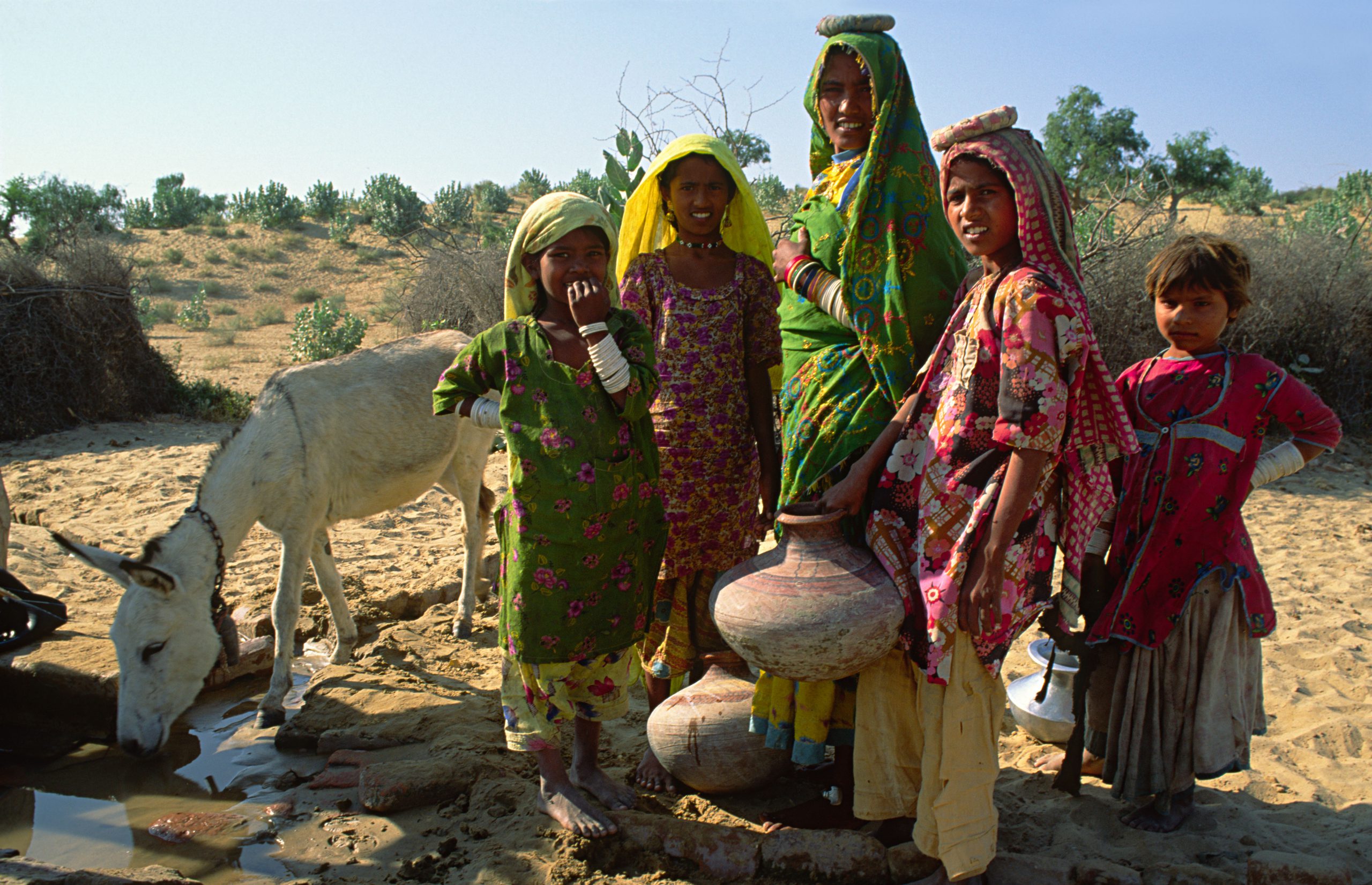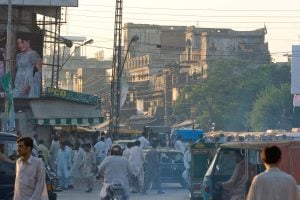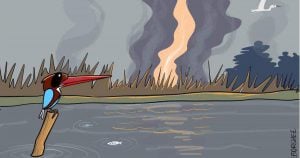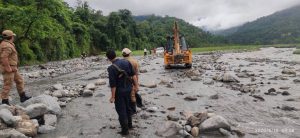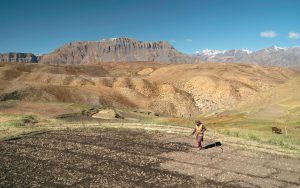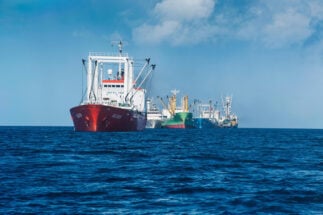The people living in Pakistan’s Thar desert are all too familiar with the feeling of thirst. For many residents of the desert in the southern province of Sindh, the day begins with carrying water pitchers, which they fill from stored rainwater or small natural tanks, after walking on hot sand for hours.
The population of 1.6 million in the district of Tharparkar has been surviving on contaminated, saline or untreated groundwater as long as anybody can remember. Multiple governments have announced schemes to improve life for the Thari people but no tangible projects have materialised.
One recent example is the Sindh government’s proposed USD 33 million project in 2015, under which 750 reverse osmosis (RO) water purification plants were to be installed in Tharparkar. Years later, barely 400 RO plants exist and at least 70% are dysfunctional. Death and destitution continue to haunt Thar, where each year at least 400 children die from malnutrition and disease.
Without surface water infrastructure and in the aftermath of consistently ineffective government schemes, the most practical way to help Tharis is constructing a canal from the Sindh district of Umerkot to Islamkot in Tharparkar.
While experts say the construction of a canal is possible and would be a welcome step in addressing the plight of the Thari people, infighting and apathy from political parties make its realisation difficult.
Is a canal even possible?
About 85% of the Thar desert is located within the Indian state of Rajasthan. Water is provided to the people living in Rajasthan’s desert area via the 650-kilometre Indira Gandhi Canal, which begins in the Indian state of Punjab and ends in Jaisalmer in Rajasthan.
Bakhshal Khan Lashari, project director at the US-Pakistan Centre for Advanced Studies in Water at the Mehran University of Engineering and Technology in Jamshoro, said a similar project in Thar is possible.
“There is no technical issue in providing canal water to Thar. It becomes a point of attraction for tourists when it turns green after rains and the rain-fed agriculture carried out by poor locals every year suggests that the soil has the potential for agricultural production. Although the topography of Indian Rajasthan and Pakistan’s Thar desert are different, a canal can be built and provide water in Thar,” Lashari told The Third Pole.
While Tharparkar has been deprived of canal water, the districts bordering it (Badin, Umerkot and Mirpur Khas) do have this vital resource. In Pervez Musharaf’s regime in the early 2000s, the government tried to supply water via pipelines from Naukot to Mithi and Kaloi to Diplo. But during the catastrophic 2010 floods, the pipeline between Kaloi and Diplo was damaged. The Naukot-Mithi pipeline, which initially supplied water every week, now supplies water once a month — and only to the residents of the city of Mithi.
Political hurdles
Political infighting is the biggest hurdle to canal construction. The government of Sindh and federal government have fought over water distribution for decades. The share of water between the country’s provinces is regulated by the Water Apportionment Accord. However, the government of Sindh has said that this does not guarantee a minimum flow of river water through the province.
Read: In Sindh water is only for rich and powerful
One example of political tensions preventing progress is the Rainee Canal Project. Initiated in 2002 by the Water and Power Distribution Authority (WAPDA) to irrigate lands on the left bank of the Indus river in the districts of Sukkur, Ghotki and Khairpur, the intention was to later build a canal in Thar. When its first phase was completed in 2014, work halted due to a funding dispute. The federal government wanted the provincial government to provide funds; the government of Sindh said that WAPDA is not a provincial entity and so the federal government should pay for the project.
Hassan Abbas, a hydrology and water resources expert, said that bringing canal water to Thar would be a “brilliant idea”, but its success was contingent on fair distribution. “[There is] already a quarrel going on among provinces on water distribution. In such a situation, how will it be possible to provide water in Thar through a canal? Sindh’s coastal-belt districts Thatta, Sujawal and Badin are also facing severe water scarcity – who will guarantee that after building another canal the water will be provided in Thar [given the systemic problems with water distribution in the country]?”
Coal mines get priority
While desert areas in the Chachro, Dahili and Nagarparkar sub-divisions of Sindh are deprived of fresh water, the Naukot-Mithi pipeline mentioned earlier has been stretched to provide water to Thar’s coal fields. The Thar desert contains one of the world’s biggest deposits of lignite coal, now being exploited as a key project under the China Pakistan Economic Corridor.
![Pakistan’s Thar desert contains one of the largest untapped coal deposits in the world [image by: Amar Guriro]](https://dialogue.earth/content/uploads/2016/08/thar-e1592336606780.jpg)
“Last year in Vikrio village situated along the Thar coal field, the water level in a newly constructed 300-foot-deep tube well disappeared. More than 3,000 people had to cry for water for months,” he said.
Read: Pakistan’s coal expansion brings misery to villagers in Thar desert
Through protests and hunger strikes, residents of Thar have stressed that canal water is the only solution to Tharparkar’s water crisis. Governments have conceded this, but never seriously geared up a strategy.
The main reason for this is Thar’s geographical position. It is in the far south-east of Pakistan and is one of the country’s poorest districts. Before 2004, even the district capital of Mithi was not connected by road to any other city or district of Sindh. Furthermore, 90% of the population live in rural areas and are uneducated, so struggle to have their voices heard.
Government promises
Ashfaq Memon, adviser to the chief minister of Sindh on the improvement of the irrigation system and water management, said, “The Sindh government is taking the issue very seriously and planning to provide water to Thar through [the Makhi-Farash canal] from Dhoronaro in Umerkot.”
He said that the current capacity of Makhi-Farash, which is the last stage of Sindh’s Nara Canal, of 14,000 cubic foot per second, will be enhanced to 20,000 cu ft/s.
“It will be remodelled. Then the government will be able to supply water to Thar. 80% of the work on this project is already complete and the day is not far away when Tharis will have canal water,” Memon said.
He added: “The government of Sindh is temporarily providing water to the Thar coal fields through the Naukot-Mithi pipeline but it doesn’t mean the government has forgotten Tharis. The same [Makhi-Farash] canal will provide the water to this mega project in future.”
Providing canal water to a desert may seem an uphill task, but if the government wants humans and animals to be able to live, it must do so. If it does not, the day will come when the desert is uninhabitable.
